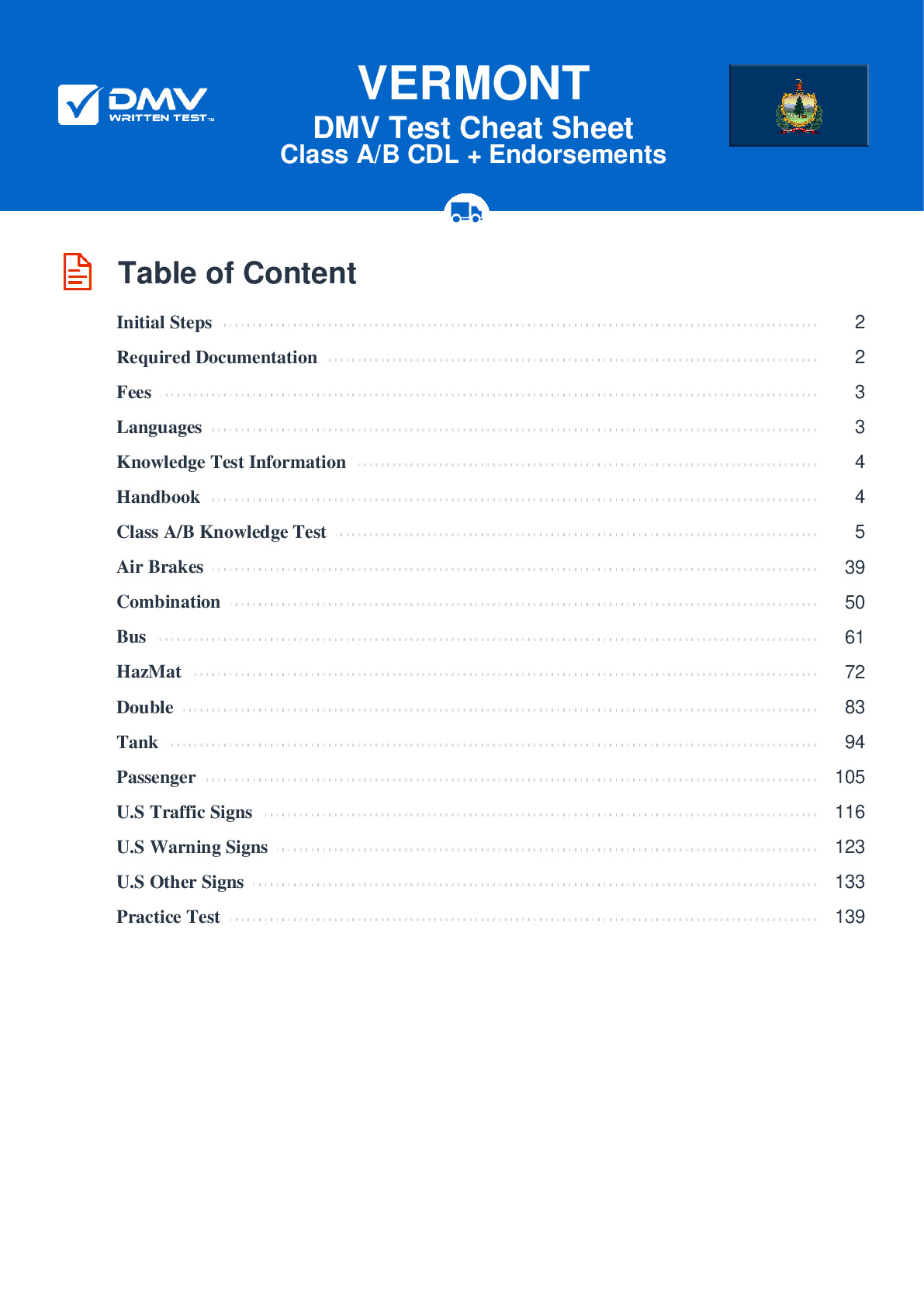Air Brakes
This endorsement is required for driving a vehicle with air brakes. To receive this endorsement, applicants must pass a written test. The test consists of 25 multiple choice questions. Each question has three answer choices. To pass, the applicant must answer at least 20 questions correctly. Test questions come from the Vermont Commercial Driver’s Manual. Questions come from the chapter covering: Air Brakes. The Air Brakes endorsement may be used with the Class A, B or C CDL.
Number of Question
Passing Score
7. An Anti-Lock Braking System (ABS):
Explanation
Anti-Lock Braking Systems (ABS) are compatible with air brakes and help a driver maintain control of their vehicle by preventing wheel lockup.
8. If the safety relief valve in the air brake system releases air:
Explanation
An air brake system has a safety relief valve, which releases air from the tanks if the pressure gets too high. If the valve must operate, something in the system is wrong and should be addressed by a mechanic.
9. If using spring brakes when hauling a heavy load, a complete stop will:
Explanation
Spring brakes do not work on all axles. If your vehicle's spring brakes activate due to low pressure in an air brake system, your vehicle will need a longer distance to stop than usual, especially if you are carrying a heavy load.
10. The rods in S-cam brakes move the slack adjusters when air pressure is added to the brake chambers. This air pressure is added to the chambers when the driver:
Explanation
When pressing the brake pedal in a vehicle with S-cam brakes, air will enter the brake chambers. The added air pressure will push out the rods and move slack adjusters, twisting the brake camshafts.
11. A low air pressure warning signal:
Explanation
Any vehicle with air brakes must be equipped with a low air pressure warning signal.
12. Having ABS on only one axle:
Explanation




